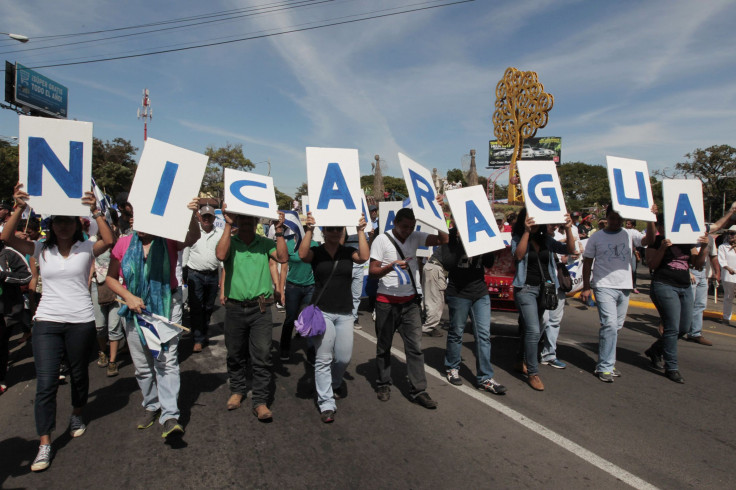Nicaragua Canal Project: Scientific Panel Criticizes Weaknesses In Environmental Impact Study

Nicaraguans are anxiously waiting for the government to make public a long-anticipated environmental impact report on the $50 billion interoceanic canal project. But while the public waits, some independent scientists have already seen the report -- and aren’t happy about it.
British consultancy Environmental Resources Management, which conducted the assessment, offered early drafts to a panel of 15 scientists in March before submitting a final report to the Nicaraguan government May 31. An environmental news outlet called Circle of Blue obtained and first reported on the panel’s review, which criticized the scope and depth of the environmental study as “insufficient given the magnitude of the proposed projects associated with the canal construction.”
ERM allocated “inadequate resources” for sampling and analysis in several instances, and didn’t thoroughly examine the canal’s potential impact on wildlife and marine habitats near the proposed route, the panel wrote. “Many of the impacts of construction and operation of the canal will be long term, and some may be irreversible.”
The panel’s 11-page review critiqued the assessment’s sampling and model of Lake Nicaragua, the country’s biggest freshwater source, which would be bisected by the canal. “There were questionable [or even implausible] results presented in the lake water-quality data reported,” the review stated. It also targeted a “brief and incomplete snapshot” of biodiversity and wildlife along the route and the canal’s potential effect on plant and animal species there.
The independent panel, assembled from scientists from a range of institutions in the U.S. and Nicaragua, previewed four chapters out of what would eventually be a 14-volume report on the impact of the canal. The assessment included environmental impact and social impact studies, but the review panel only focused on the environmental portions.
“It seemed to me that the environmental impact assessment process was to create the illusion of science,” one of the panel’s scientists, Michael T. Brett of the University of Washington, told Circle of Blue. “I had the impression that most of the sections presented to us were of the quality of a weak master’s thesis at any major research university.”
ERM responded to the criticisms, saying it addressed the panel’s recommendations and updated its findings with additional data and analysis before finalizing the assessment for submission. It also noted that its sampling methods were “fit for purpose,” designed to gather just enough information about the project’s likely environmental impact, and only reached conclusions when it felt there was sufficient data to back it up.
It also agreed that the two-year timetable for the analysis was limiting. “ERM recommends in the ESAP [Environmental and Social Action Plan] that several additional studies be completed to confirm key design assumptions ‘before a final decision is made by the government of Nicaragua,’” it wrote.
The canal plans have been the subject of widespread controversy in Nicaragua. The Hong Kong-based HKND Group, led by Chinese billionaire Wang Jing, won a concession in 2013 to build and operate the canal for 50 years. But negotiations between HKND and the Nicaraguan government have remained behind closed doors, prompting suspicion about the economic benefits of the deal and proper oversight over the potential environmental impact.
In August, Pedro Alvarez, a professor of engineering at Rice University in Texas and one of the members of the independent panel, told International Business Times the biggest fear was that HKND would leave the project unfinished. “If [HKND] begins something that’s not going to be completed, they’re going to waste resources, displace people, raise false hopes, and along the way cause some irreparable damage, and we’re left in a situation where we ended up worse than we’ve begun,” he said.
On May 31 ERM presented the finalized report to Nicaraguan authorities. Telemaco Talavera, a spokesman for the Nicaragua canal authority, said the report “indicates that the route selection was correct” and that it declared the canal “viable,” but didn’t offer additional details. The report will become public after getting approval from the Environmental Ministry, probably in July, Talavera said.
© Copyright IBTimes 2025. All rights reserved.






















